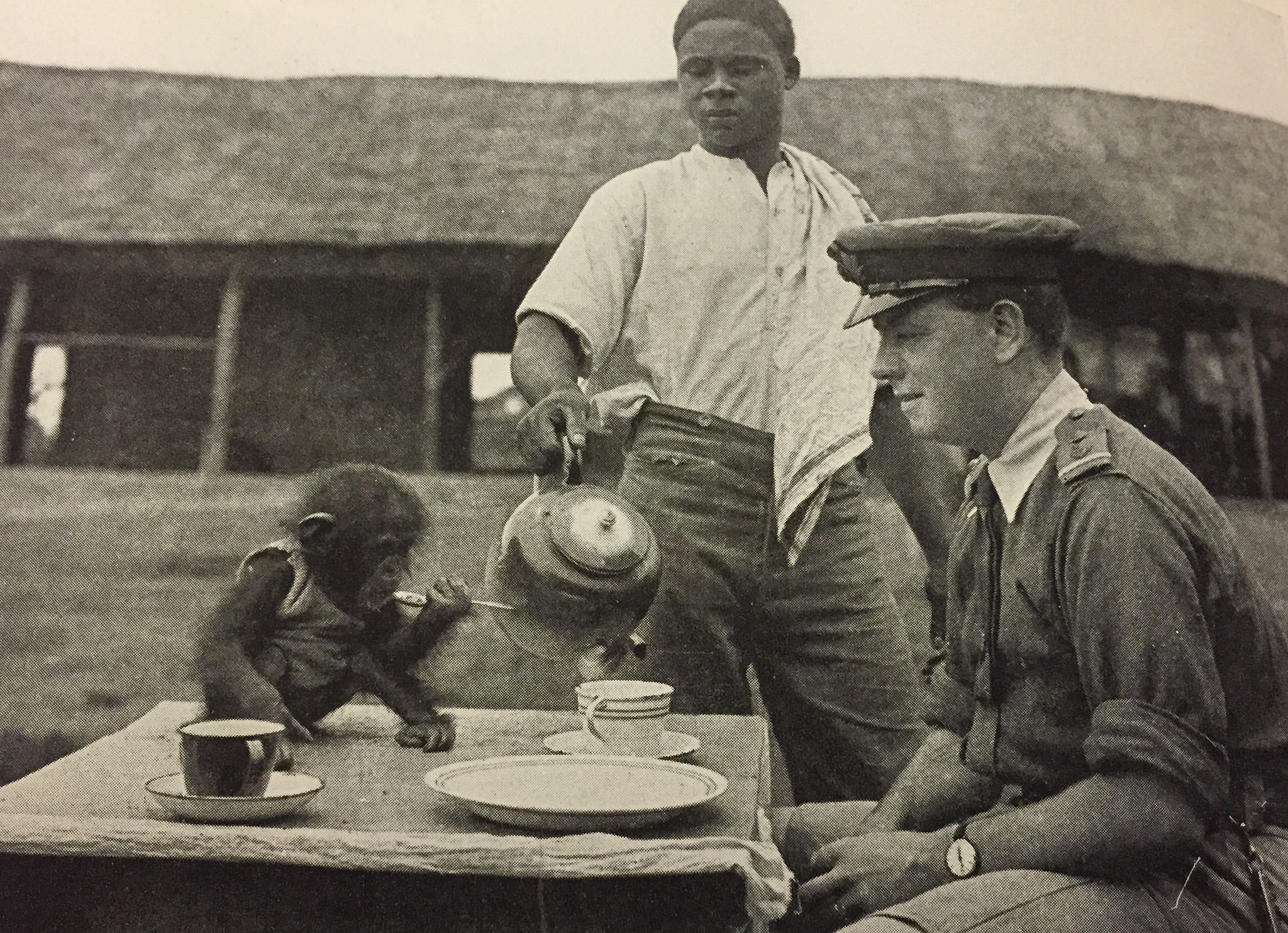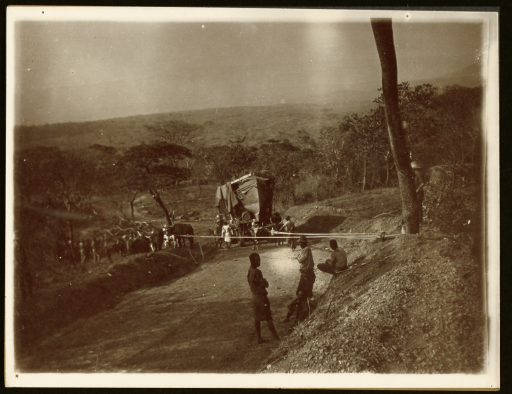One of the more unusual operations of the First World War is the focus for a family event at the UK National Archives in London on October 3rd 2015.
It marks the centenary of a British scheme to seize Lake Tanganyika from the German navy using two gunboats, weighing 16 tonnes, hauled across Africa.
The Chimp Who Went to War tells the story of the expedition’s eccentric commander, Geoffrey Spicer-Stimson and those who accompanied him, including a chimpanzee named Josephine.
The National Archives invites families to explore ‘this epic story which demonstrates the scale of the First World War and the great lengths that many individuals went to for the war effort.’
There’ll be a professional story-teller; a range of creative activities aimed at children aged 5-11 focussing on aspects of the expedition; and an opportunity for families to go on a ‘Behind the Scenes Tour’ of the National Archives

Josephine, the expedition chimpanzee, at breakfast (Image: © Crown copyright – courtesy of Imperial War Museums)
Britain’s Navy authorised an operation to take control of Lake Tanganyika at the start of the First World War.
The freshwater great lake straddled the region between British, Belgian and German colonies in central southern Africa (the present-day states of Democratic Republic of Congo, Tanzania, Rwanda, Burundi and Zambia).
Commander Geoffrey Spicer-Simson volunteered to lead the expedition after reportedly overhearing a conversation about the plan, National Archives says.
Two gunboats, built at Twickenham on the outskirts of London, were requisitioned and began their journey by ship and rail from Tilbury Docks in June 1915. Transported via Marseilles, they arrived in Cape Town two months later.
From there, the boats were moved by train to Elisabethville (now Lubumbashi) in Congo.
Under Commander Spicer-Simson’s supervision, the boats were then hauled by traction engine and oxen across 150 miles of bush and mountains. They arrived at Lake Tanganyika on October 26th 1915.
Spicer-Stimson named the gunboats Mimi and Toutou. The Admiralty rejected his original request to call them Dog and Cat (only later was it discovered that the chosen names meant ‘meow’ and ‘fido’ in Parisian slang).
In December 1915, the British vessels captured the German gunboat Kingani and sank the Hedwig von Wiessman two months later. The Germans scuttled their third ship, Graf von Götzen in July 1916.
The British had command of Lake Tanganyika for the invasion of German-ruled East Africa.
The Götzen was raised after the First World War and continues in service today as the ferry MV Liemba.
Commander Spicer-Simson’s chimpanzee, Josephine, was found a home at Cape Town Zoo.
‘The Chimp Who Went to War’ is a family event at the National Archives, Kew, London, on Saturday October 3rd. There are two sessions at 10am and 12.30pm.
A professional storyteller will read the story of the gunboats Mimi and Toutou. Children will then have the opportunity to get involved in creative activities to interpret what they’ve learnt with a community artist. Craft activities are aimed at children aged 5-11.
More information can be found on the National Archives website. The event is free but booking is required for the two sessions.
Information supplied by The National Archives
Images © Crown copyright – courtesy of The National Archives (gunboat haulage); Imperial War Museums (Josephine)
Posted by: Peter Alhadeff, Centenary News
